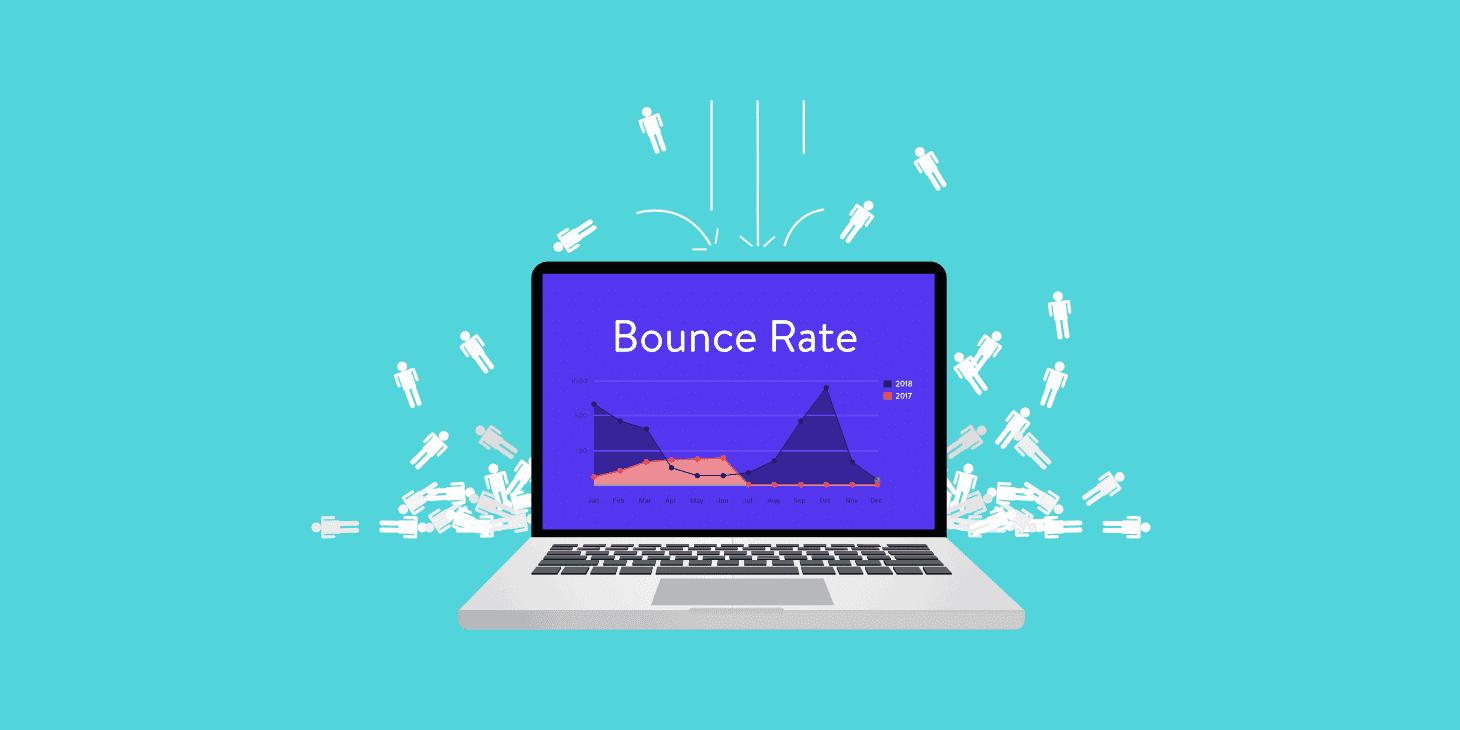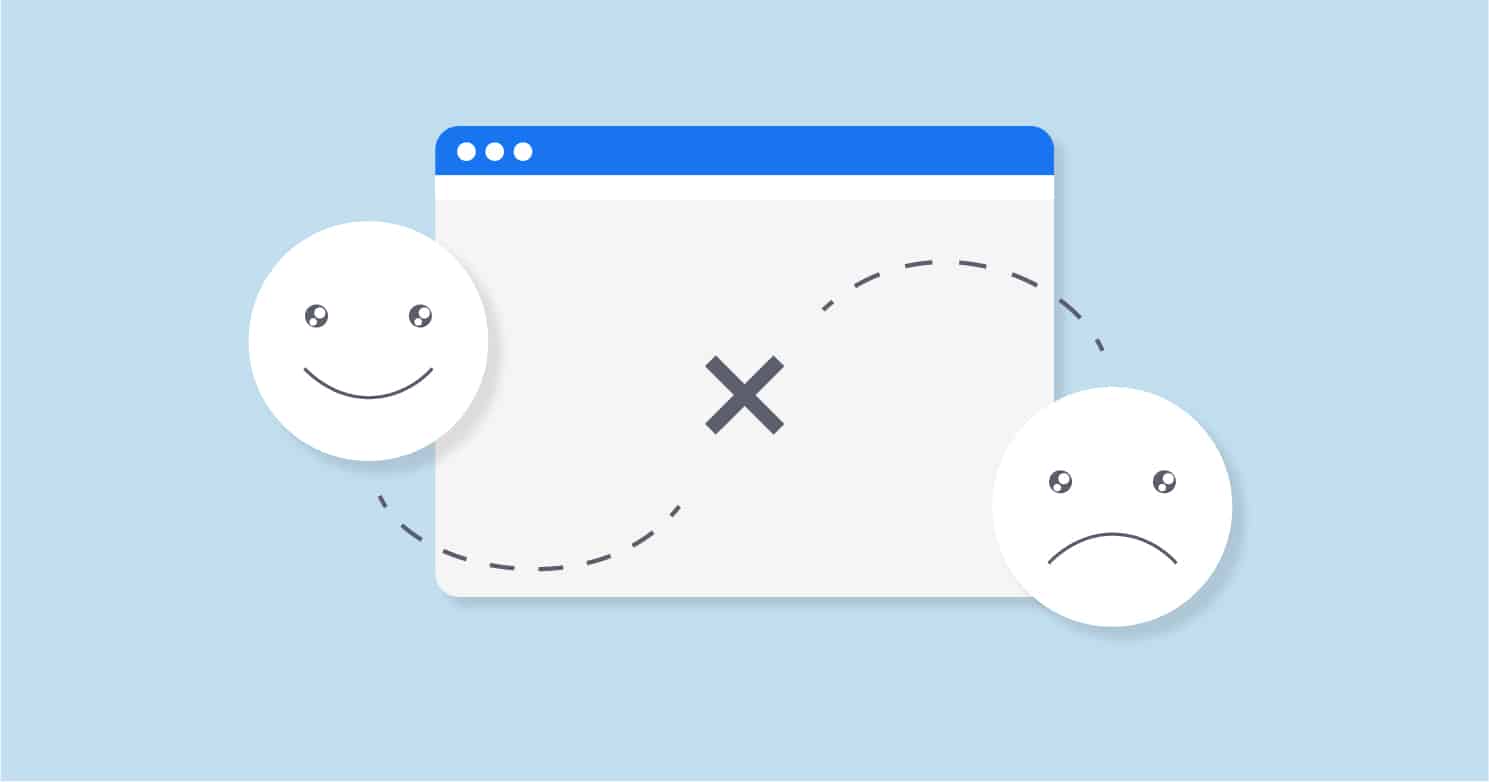What is a Bounce Rate?
Bounce rate is the percentage of visitors to a particular website who leave the website (or bounce from) after viewing a single page. This means that the visitor stays on one page without viewing a second or jumping around and exploring other landing pages. It is usually used as a measurement of how much engagement a website receives to help track how well marketing efforts are doing. A low bounce rate may indicate that a site is popular with its visitors.

Why is it Important to Understand Bounce Rate?
When it comes to bounce rates, most businesses agree that a high bounce rate is a bad thing. A high bounce rate indicates that the content on your website is not matching the needs of your visitor, which is why they move from page to page, looking for something else. If your content is not reaching your targeted audience, it can spell disaster for your business. You won’t see much growth because there won’t be conversions or sales, which can cost you money, resources, and time.
With all of this in mind, knowing your bounce rate is important because it lets you know how your marketing efforts and advertisements are doing. If your bounce rate indicates that your efforts are not working, you now have the space to make the necessary changes to not only reach your target audience but to turn them into loyal customers.
You can find your bounce rate by looking into your Google Analytics. As stated, the percentage indicates how many people come to your website leave after viewing the page they first landed on. This means that if Google Analytics is saying that your bounce rate is 55%, then 55% of the people who have visited your site leave it after viewing the page they entered on.
Typically this will be your home page, but it may be another depending on how your website is set up. What you want in the end is for visitors to be drawn to your website, to view your home or another important page, and then to explore more pages throughout your website. This indicates engagement and poses a higher likelihood for a conversion to be made.

How is Bounce Rate Calculated?
To calculate bounce rate, all you have to do is take the total number of one-page visits and divide it by the total number of entries to your website. Let’s do an example:
Say that your website’s homepage receives 1,500 visitors in the span of a month. 500 of those visitors, however, leave your site after viewing the homepage only. Let’s plug the numbers in:
- 500 / 1,500 = 0.33
This means that the bounce rate of your homepage is 33% (which is very good).
What is a Good Bounce Rate?
While you do not want your bounce rate to be too high, it is important to note that there is really no “typical” bounce rate to shoot for. Keeping in mind that the Internet is filled with billions upon billions of pages, it is very difficult to generalize what an average bounce rate should look like.
For an Internet user, there are thousands of pages to choose from that may (or may not) meet their immediate need for information, a product, or a solution. This is all to say that while you don’t want your bounce rate to be too high, you also don’t want to get caught in the idea of a “perfect” bounce rate because it will vary from site to site, business to business.
A “good” bounce rate is very subjective. What makes a bounce rate good or note will also depend on the type of webpage, where the traffic it receives is coming from, and the visitor demographic.
Some pages may have a high bounce rate because they are straightforward and informational – answering a direct question that doesn’t need any extras. It makes sense that such a page would have a high bounce because the user found exactly what they were looking for and felt no need to explore further.
For some businesses, there may be pages like this that answer a specific question that solves a certain issue, resulting in a high bounce rate. this does not make the page a bad page despite the high bounce rate. Similarly, a page can have a low bounce rate but not garner much engagement (i.e. a purchase, a sign-up, a click, etc). Keep this in mind when going over bounce rates because nuance is necessary.
In the end, a good rule of thumb is to remember that the lower your bounce rate, the better. High bounce rates are typically not desirable, but take this with a grain of salt. Remember that some pages with high bounce rates aren’t bad, while other pages with low bounce rates aren’t always good. Take into account the type of page you’re working with, what you want the page to accomplish, and how that is ultimately working out.

If you want to improve your bounce rate, think about how you can improve your website. Directive’s conversion rate optimization team understands what it takes to create a great user experience for its customer’s audience.
We offer all sorts of tools and resources that help get your site in tip-top shape so that it offers exactly what your target audience needs. To learn how your website is currently doing and how it can improve, get a free proposal with us today.